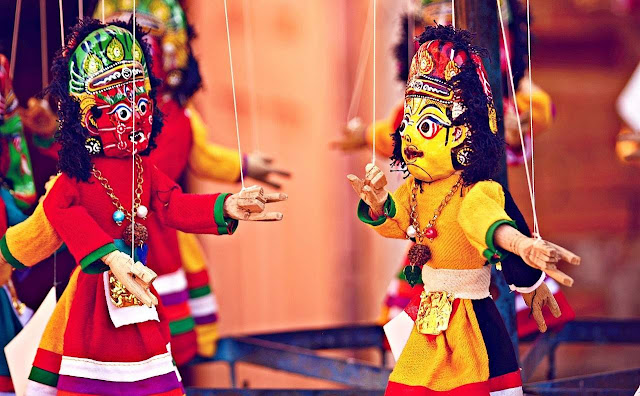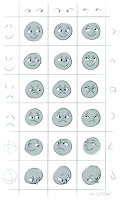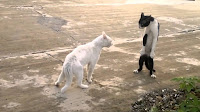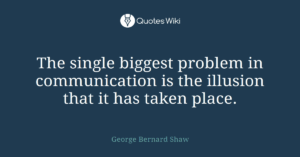 |
| Are they in control of their emotions? |
Generally speaking lots of animals are known to have emotions. Dogs, cats are probably the most common animals that we come across for emotions. We as humans, as a special species, are proud of our emotional complexity. So much so that we even developed an index for it; emotion quotient. I am not sure how that quotient works and how to evaluate emotions. After all, we do not have a common starting point for emotions, isn’t it?
Independent of the emotional question about its calculation, atleast we agree that everybody in general is emotional. I think in general we also agree that everyone has different range of emotions in different dimensions. Most of us even fake one type of emotion to cover another type. At times we get so good at it , that we cannot differentiate between the two. At that time it is very easy to align with fake emotion than the one which, if alive, is still somewhere deep in the dungeons.
Despite the fact of variety, complexity and real or fake emotions, emotions are there. We face them almost every moment of our life. This very nature of emotions make them a very crucial and important weapon in psychological warfare. Very similar to economical situations, emotions are used to mould, distract, attract people easily. In my opinion emotional manipulation brings even more drastic results than economical one. E.g. this video which I recently came across. It is observing the behavior of people in certain situations, however most probably without even realizing that we are playing with emotions.
 |
| association training – omnipresent? |
In general, on different websites or social networks, you would find similar reactions from readers. It is mostly reflected as how people are biased with dresses. It seems that the social experiment was designed to prove a certain hypothesis. It was done in a certain environment with certain inputs and results are then extrapolated to reflect the status of the whole population. But, even in this setup, why the interpretation is that this is “bad” behavior of people? We as part of our basic instincts build guards against variety of threats. When we started to wear clothes, it started a new type of categorization or even racism if I can say it. We built certain categories and associated it to other attributes. One common one is that dirty clothes are sign of poverty and that implies lack of resources e.g. food and that in turn leads to behavior and actions to fill that gap in resources. One of those could be robbery, looting, killing etc. This is a straight forward link and we all find it easy to attach to it. Once we have set up these associations, it become a general pattern leading to related actions. One of those is to ignore the person dressed “lower” than you.
People with turbans, hijab etc. are all treated differently. But, it is all based on the reference point of an individual’s life, the amount of difference between the two and how much and in which way that difference was built by theoretical knowledge or short experiences. E.g. take a person who has only watched videos of Osama giving threats and this person attached all people with turbans being terrorists. If one do not take the effort to know about other people with turbans giving more peaceful message and even the differences between different type of turbans, then it is simple association. Man with a turban associated with being a terrorist. Even if this person has not watched this video, but he has never seen anyone with a turban before, how is he expected to behave? Be immediately full of love and care? I do not think so. Basic instinct will warn to be cautious. Of course then we mix it with individual differences. The one who is more risk taking or courageous or curious will go more close. While the other more safe or “i-do-not-care” person would just walk away.
This video, to me, seems to be nothing special. It is trying to show one kind of pattern, mark it “bad”. On the other side, it is trying to set another type of pattern. By putting a child in the video it makes use of soft emotions of convincing people to a new pattern. It is just a simple natural guard that people showed. Isn’t the same guard protects us as well? After all the base of reactions is same. We notice the difference and we react. In some case it makes us safer in another it may seems like “in-human” behavior.
This video is shot always in people who are richer or same level to the girl by observance of clothes. I miss the side where crowd is really poor, as it is shown at the end, and girl is rich. Would you expect the same behavior? How about making a video about places where only super rich goes and then a man enters who is dressed as normal clothes? How about a man dressed in priest clothes, army clothes, police clothes, clown dress. We will all show different reactions simply based on the dress. What would you conclude, if a girl dressed in rich clothes goes to poor area and she is said, “go away, I do not want to see you here anymore” ? Would this community be considered wise because they know or foresee the dangers of “riches”?
We, as species, are moving across the world. In turn we seem to be reducing many types of differences. On the other side our emotions have become more sensitive. The same allows to create specific impacts on people with additional fine tuning options. One can be completely attached to the emotions while the other stand out and watch the differences. One would continue in the argument while the other can bring a smile to the face.
Love
Arundeep
One day, the town’s new conqueror asked Nasrudin, “If I were a slave, how much would I cost?”
“Five hundred dollars,” Nasrudin responded.
“What!“ the conqueror shouted in great anger. “Just the clothes I’m wearing right now are worth five hundred dollars!“
“Yes,” replied Nasrudin, “I factored the clothes into my price.”



